Return to previous page
Guadalupe Mountains National Park
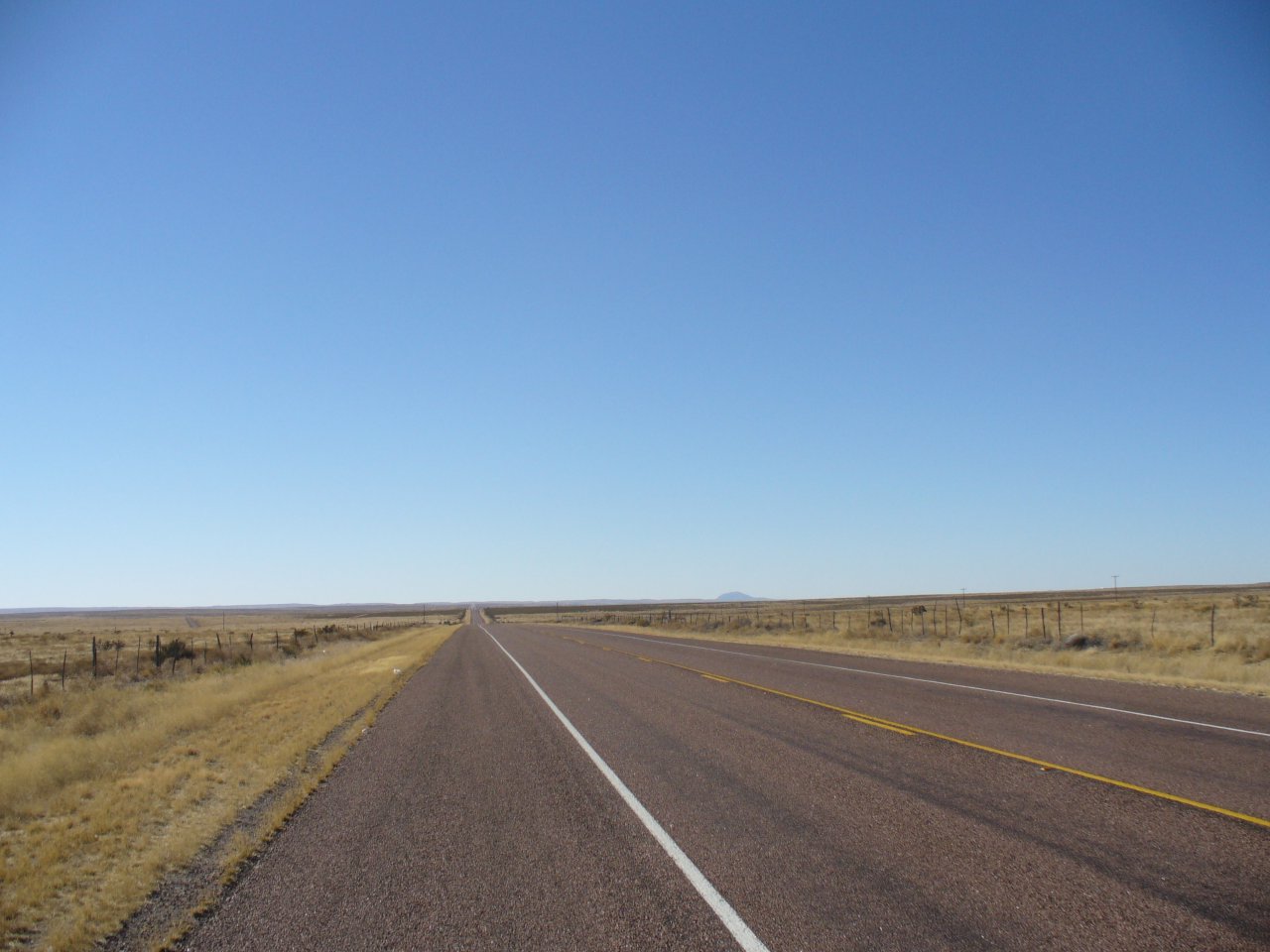
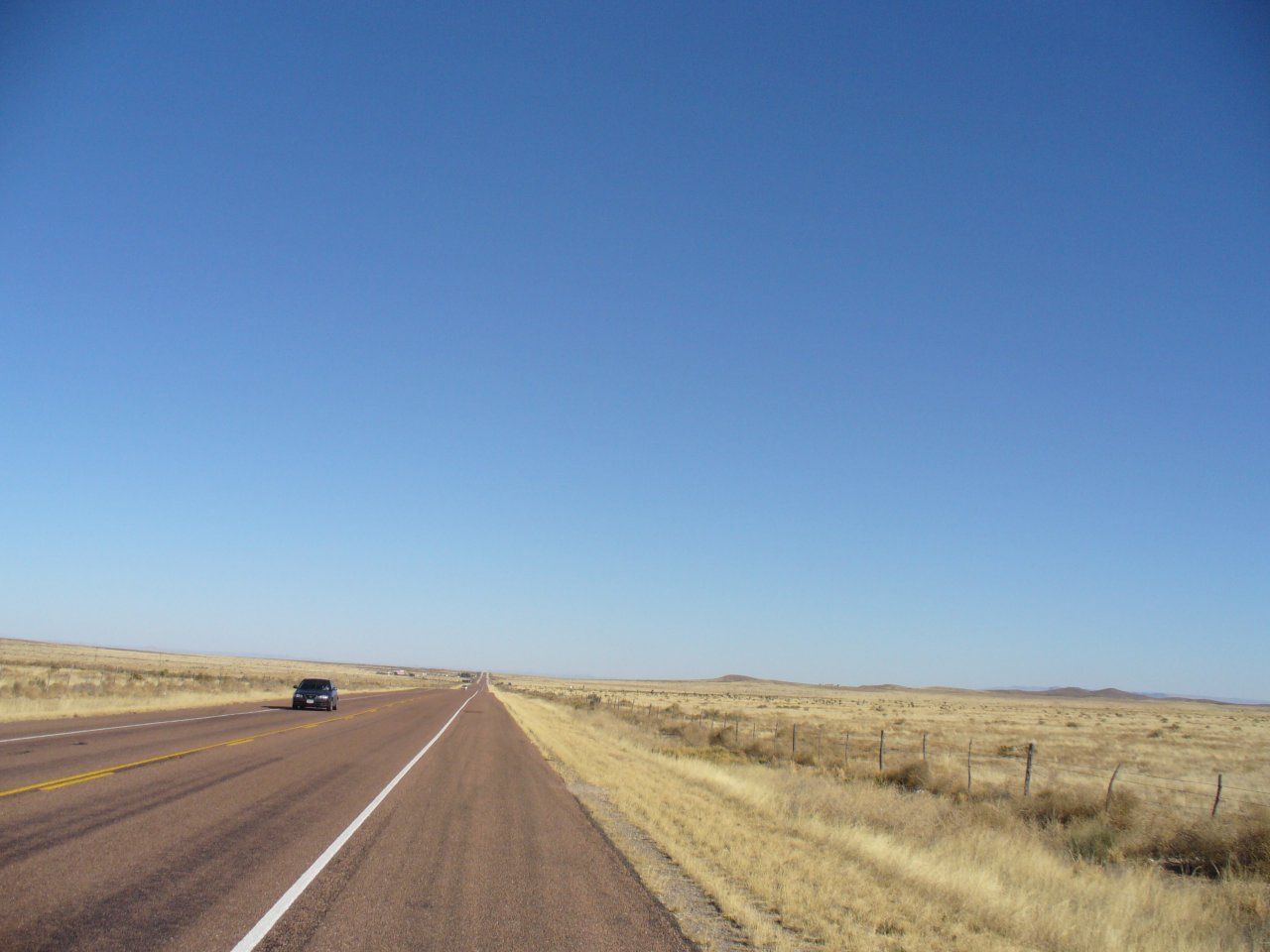 Here are photos shot in each direction from the same spot, Rt. 62,
on the way from the west to the Guadalupe mountains in Texas.
The highway is straight as an arrow for over 60 miles!
Here are photos shot in each direction from the same spot, Rt. 62,
on the way from the west to the Guadalupe mountains in Texas.
The highway is straight as an arrow for over 60 miles!
 In sharp contrast to the rolling hills of this part of Texas,
the Guadalupe mountains stand out from quite a distance away.
In sharp contrast to the rolling hills of this part of Texas,
the Guadalupe mountains stand out from quite a distance away.
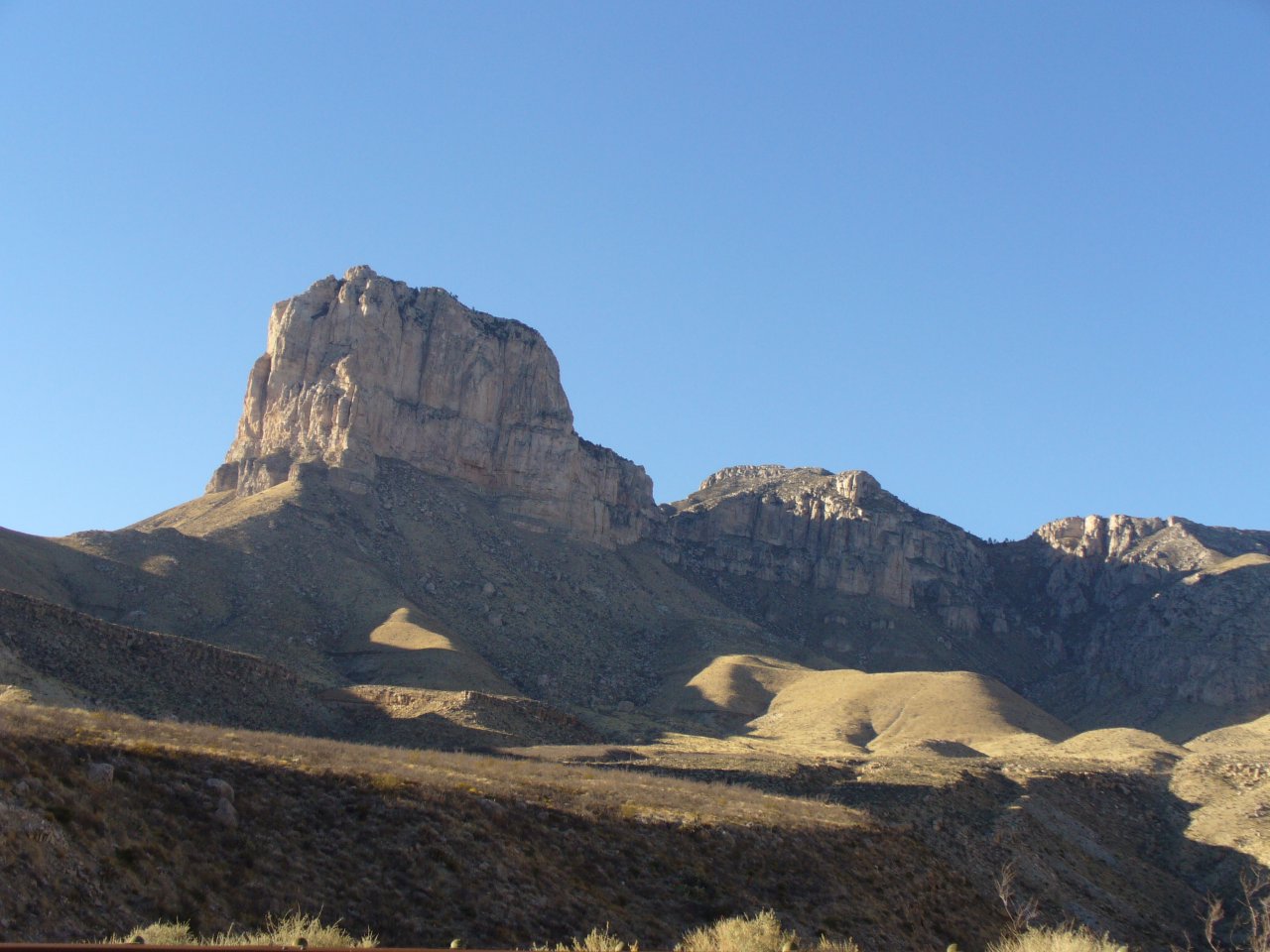 As you enter the park, the towering peaks surround you, like
El Capitan, at over 8000 feet, shown here.
As you enter the park, the towering peaks surround you, like
El Capitan, at over 8000 feet, shown here.
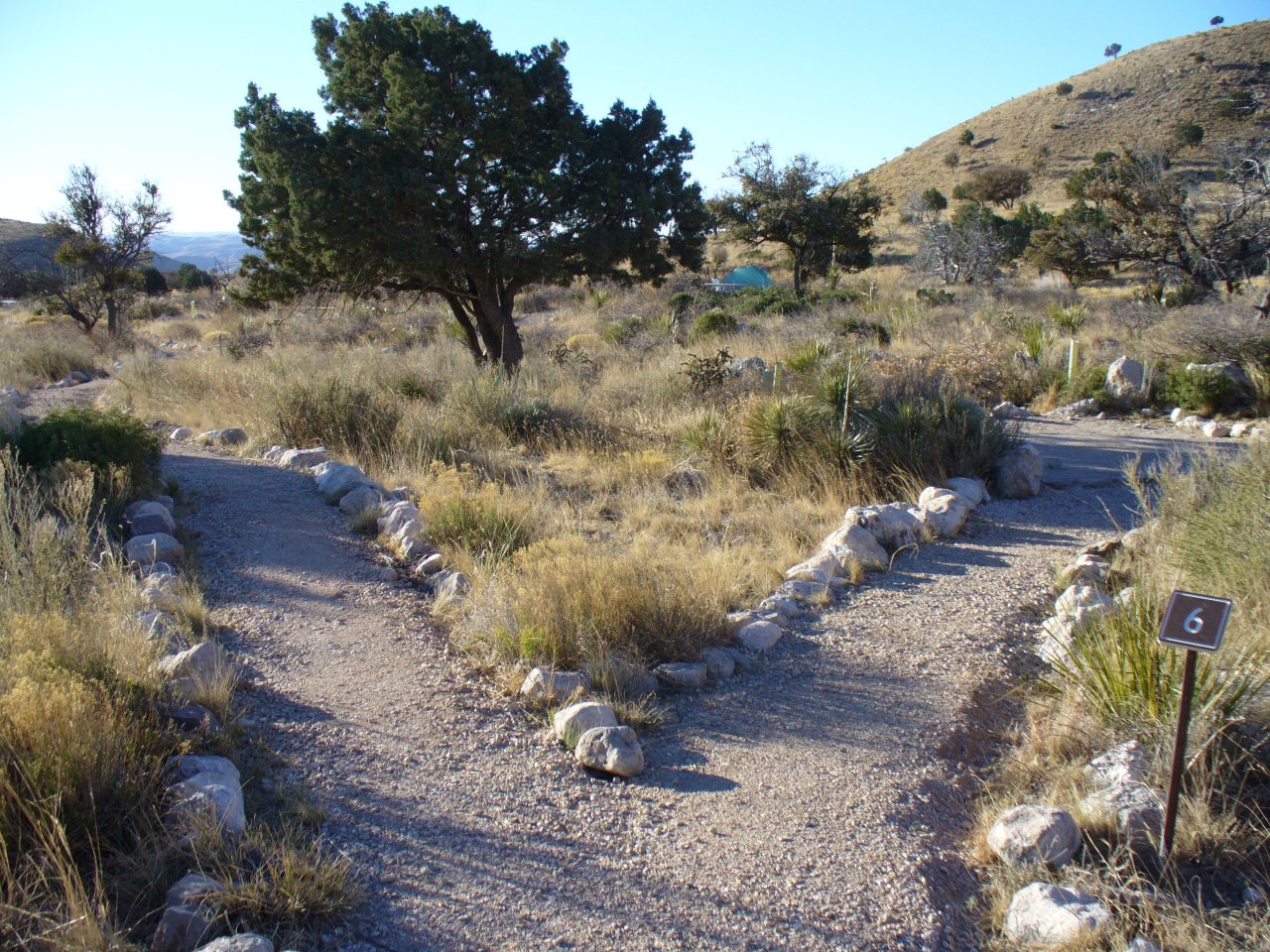
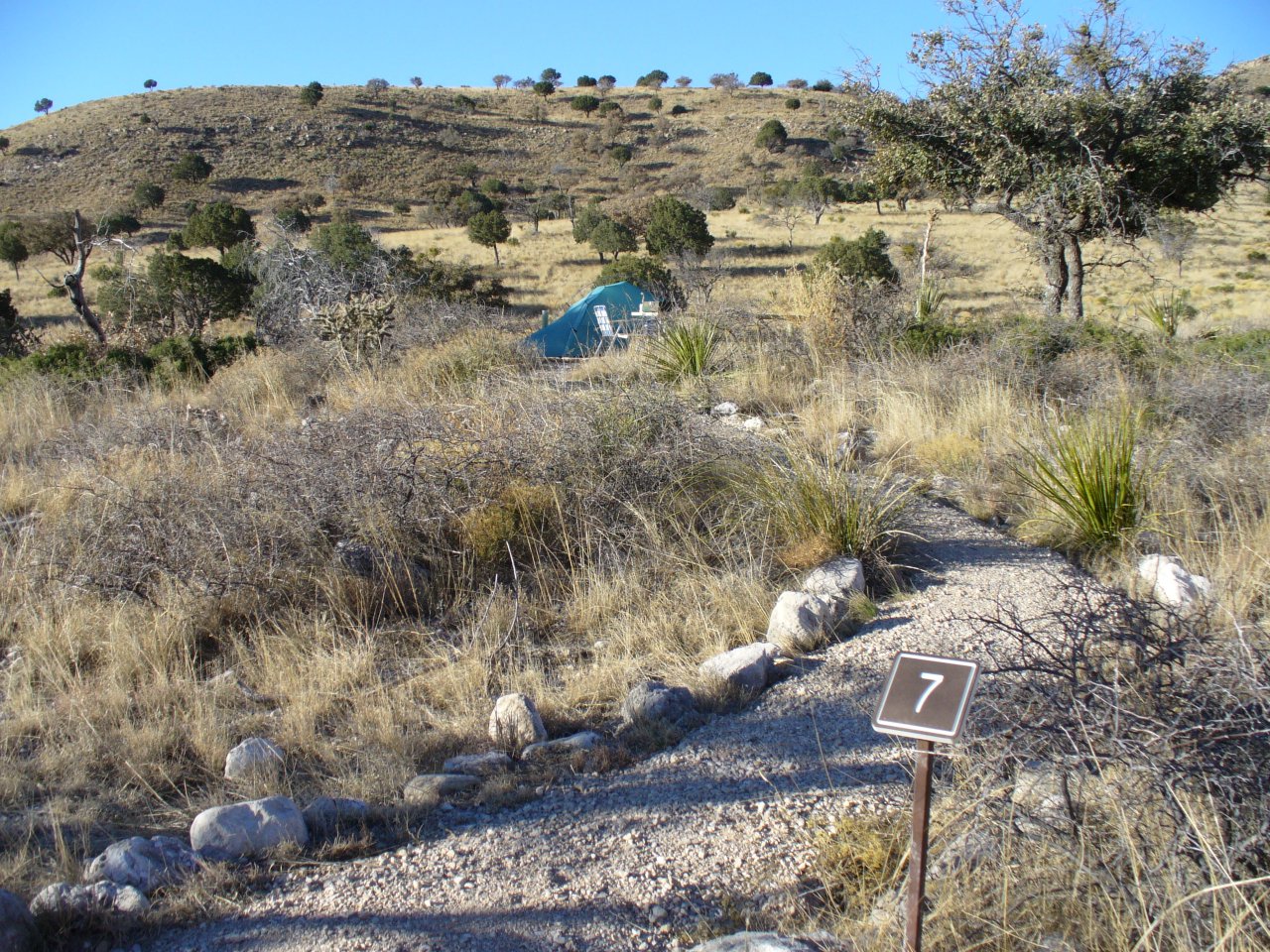 This is a tent camper's campground! Beautiful tent sites connected
by paths. You don't feel crowded in here! I met two guys, Steve (Austin,TX)
and Reed (Chicago, IL), who were also tenting in two other sites.
We sat around the first night, having dinner and discussing the southwest.
A great evening!
This is a tent camper's campground! Beautiful tent sites connected
by paths. You don't feel crowded in here! I met two guys, Steve (Austin,TX)
and Reed (Chicago, IL), who were also tenting in two other sites.
We sat around the first night, having dinner and discussing the southwest.
A great evening!
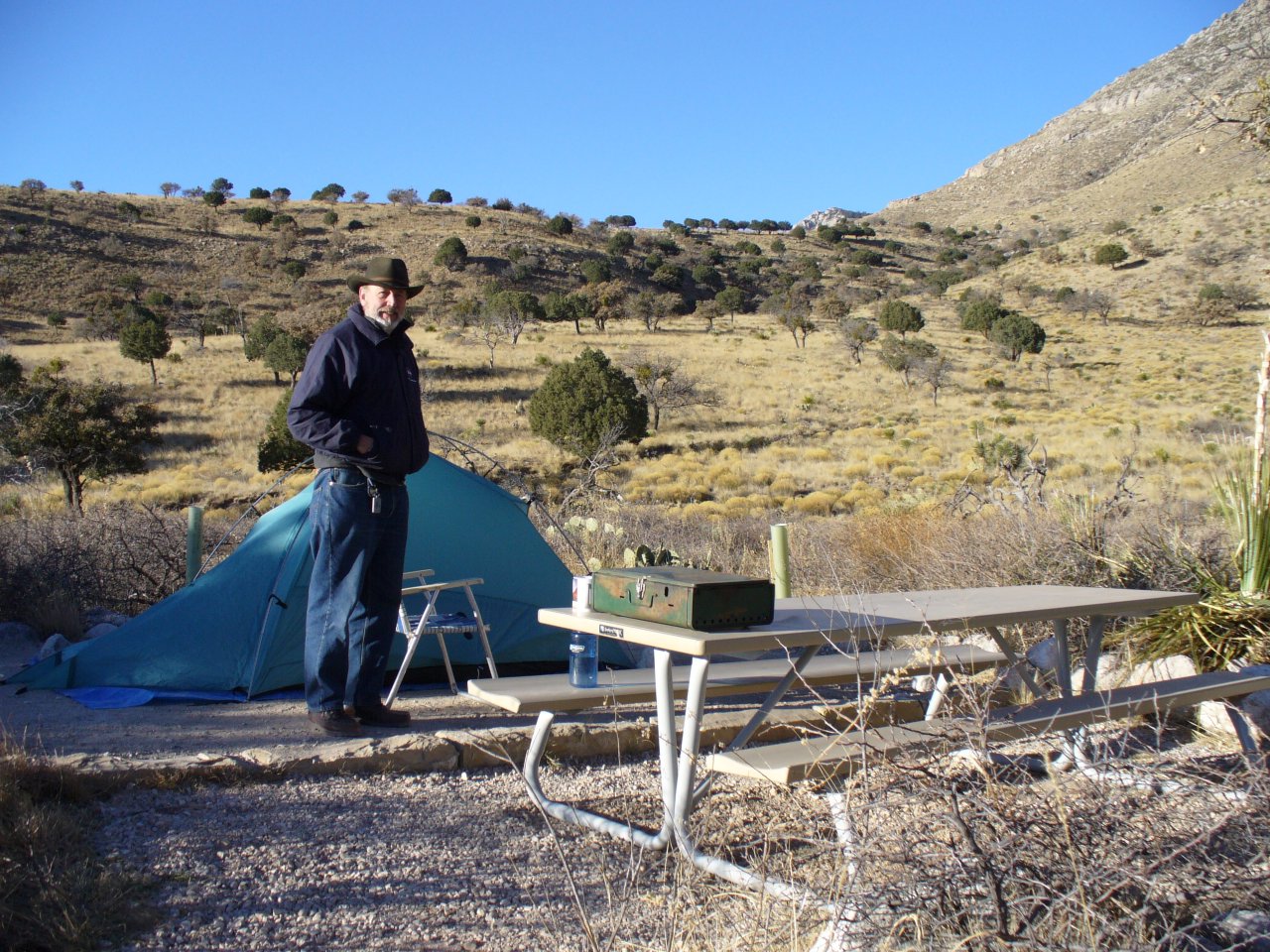
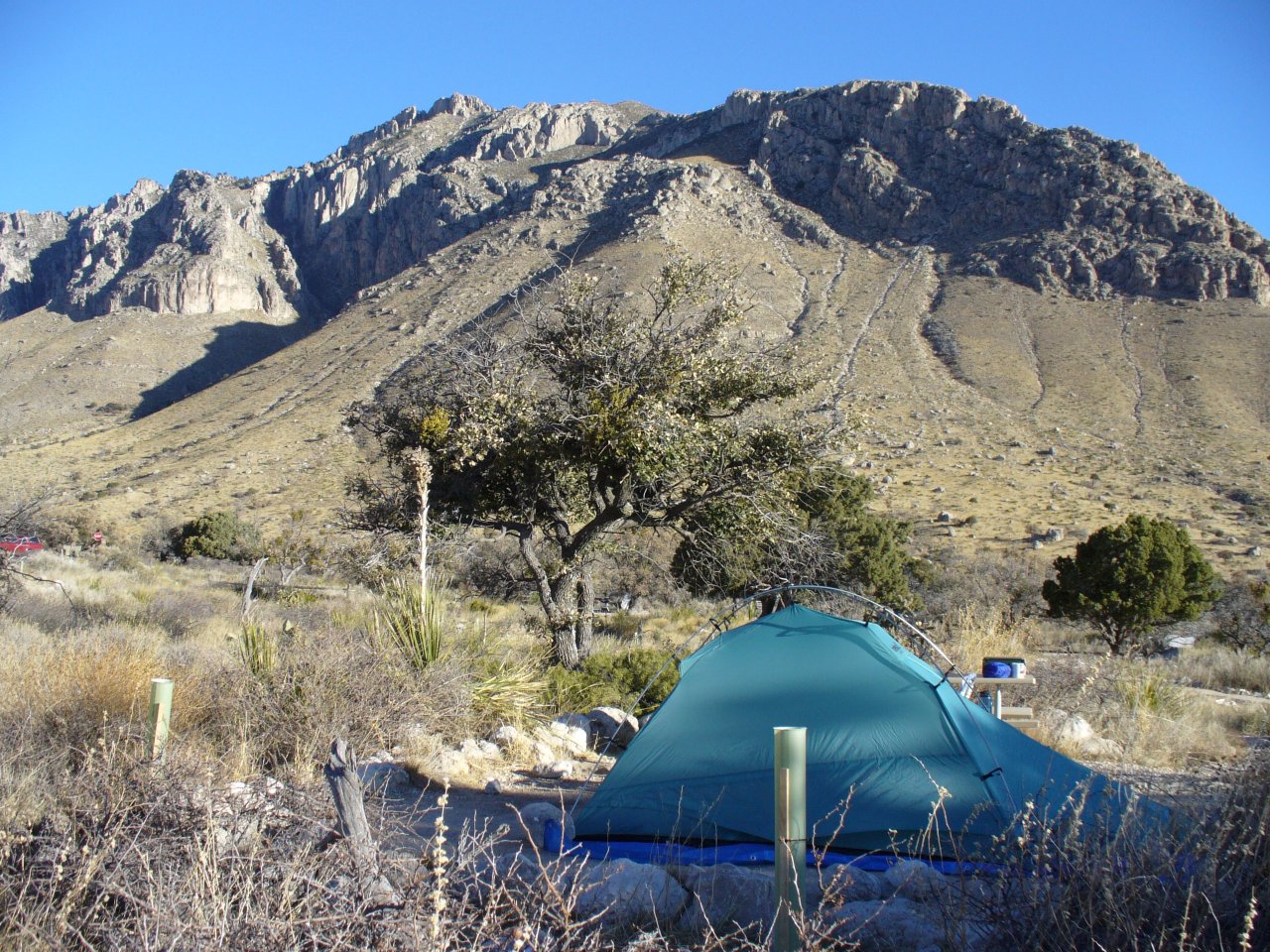 More photos of my campsite, #7. I set up the smaller tent to
save time. It also sleeps warmer in windy, colder elevations.
More photos of my campsite, #7. I set up the smaller tent to
save time. It also sleeps warmer in windy, colder elevations.
 In the afternoon, after returning from Carlsbad Caverns, I made
a 4.8 mile round trip hike to Pratt Lodge in the McKittrick
Canyon.
In the afternoon, after returning from Carlsbad Caverns, I made
a 4.8 mile round trip hike to Pratt Lodge in the McKittrick
Canyon.
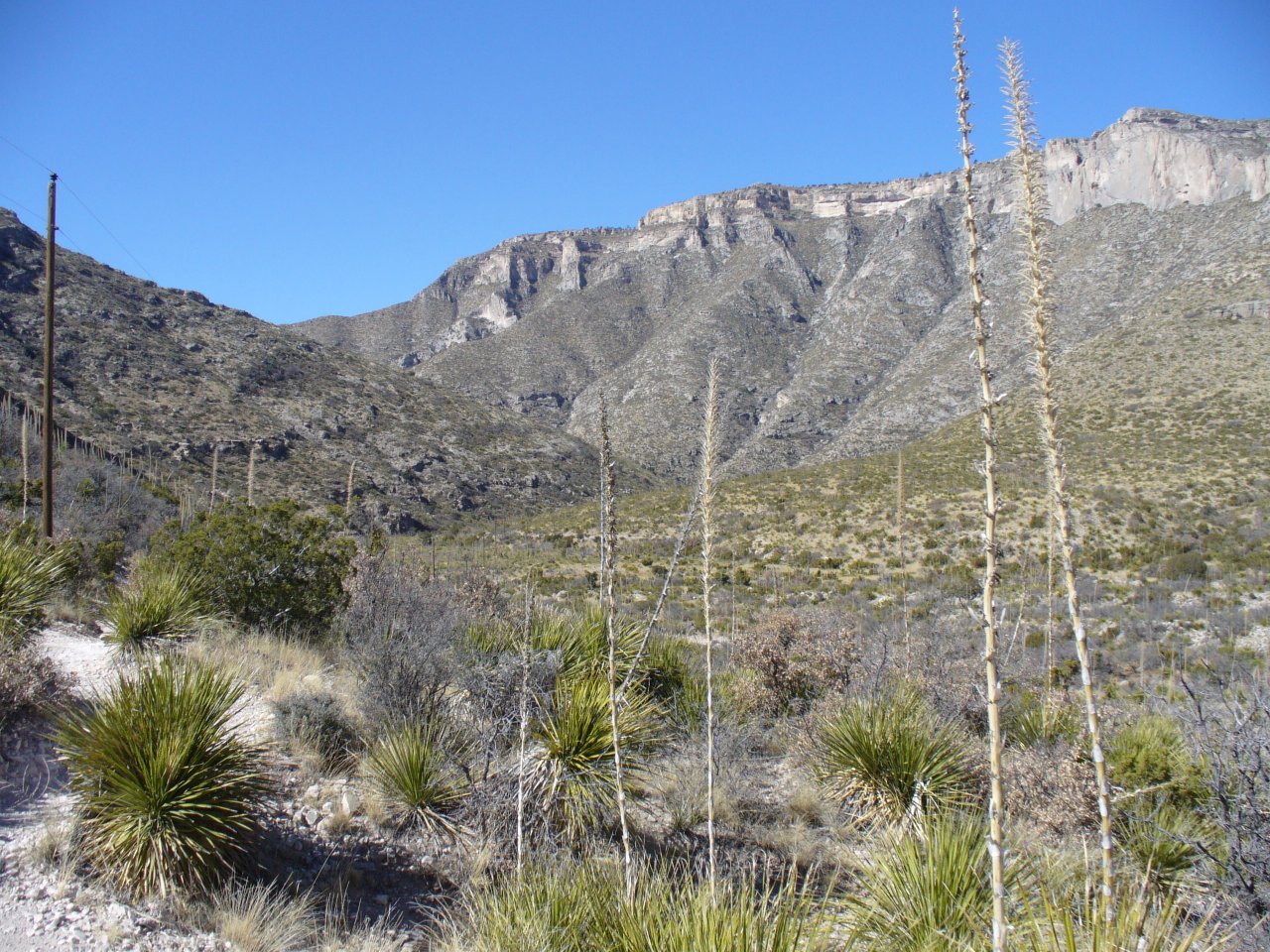
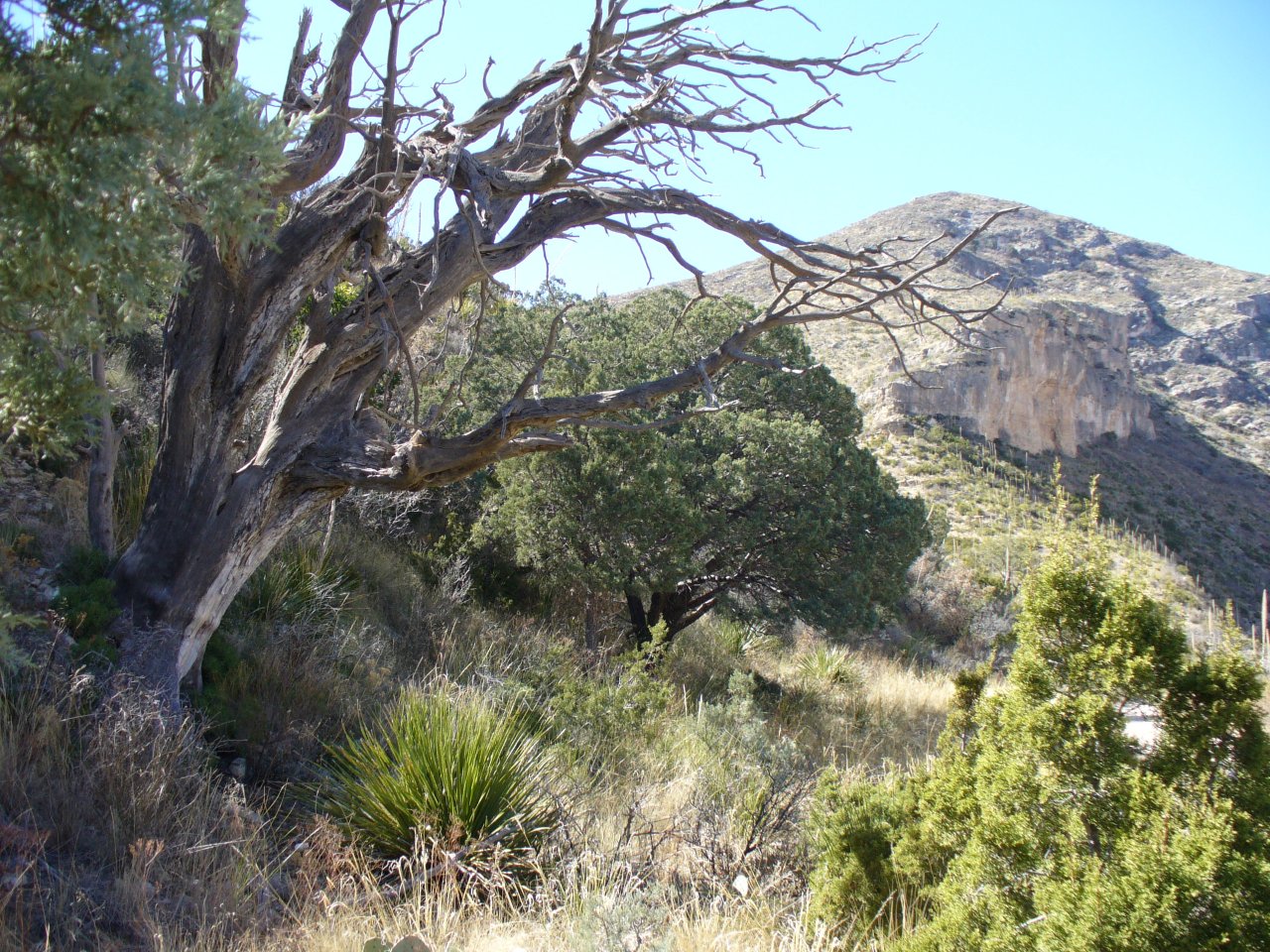 At the start, the trail is open and windy...
At the start, the trail is open and windy...
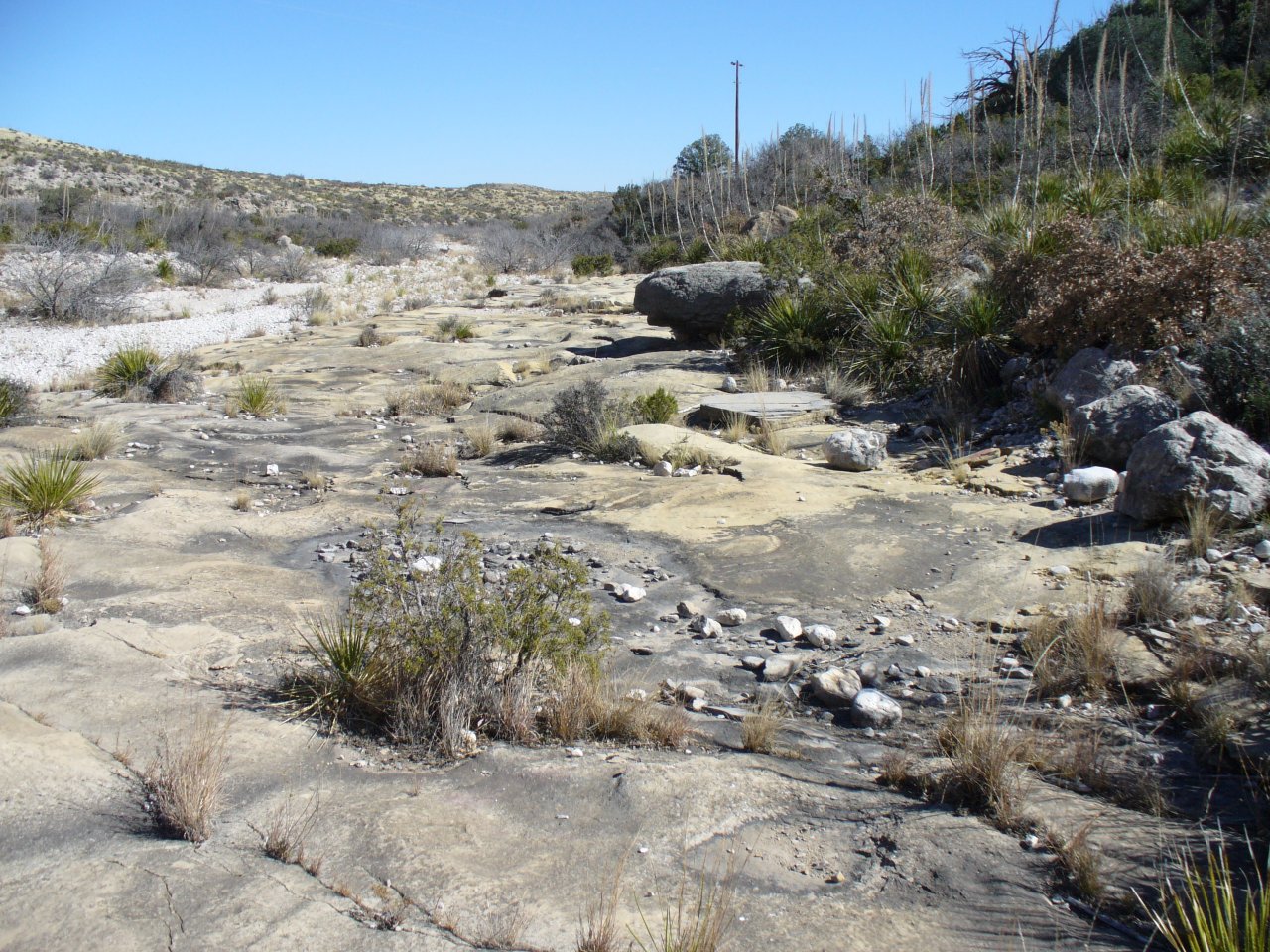
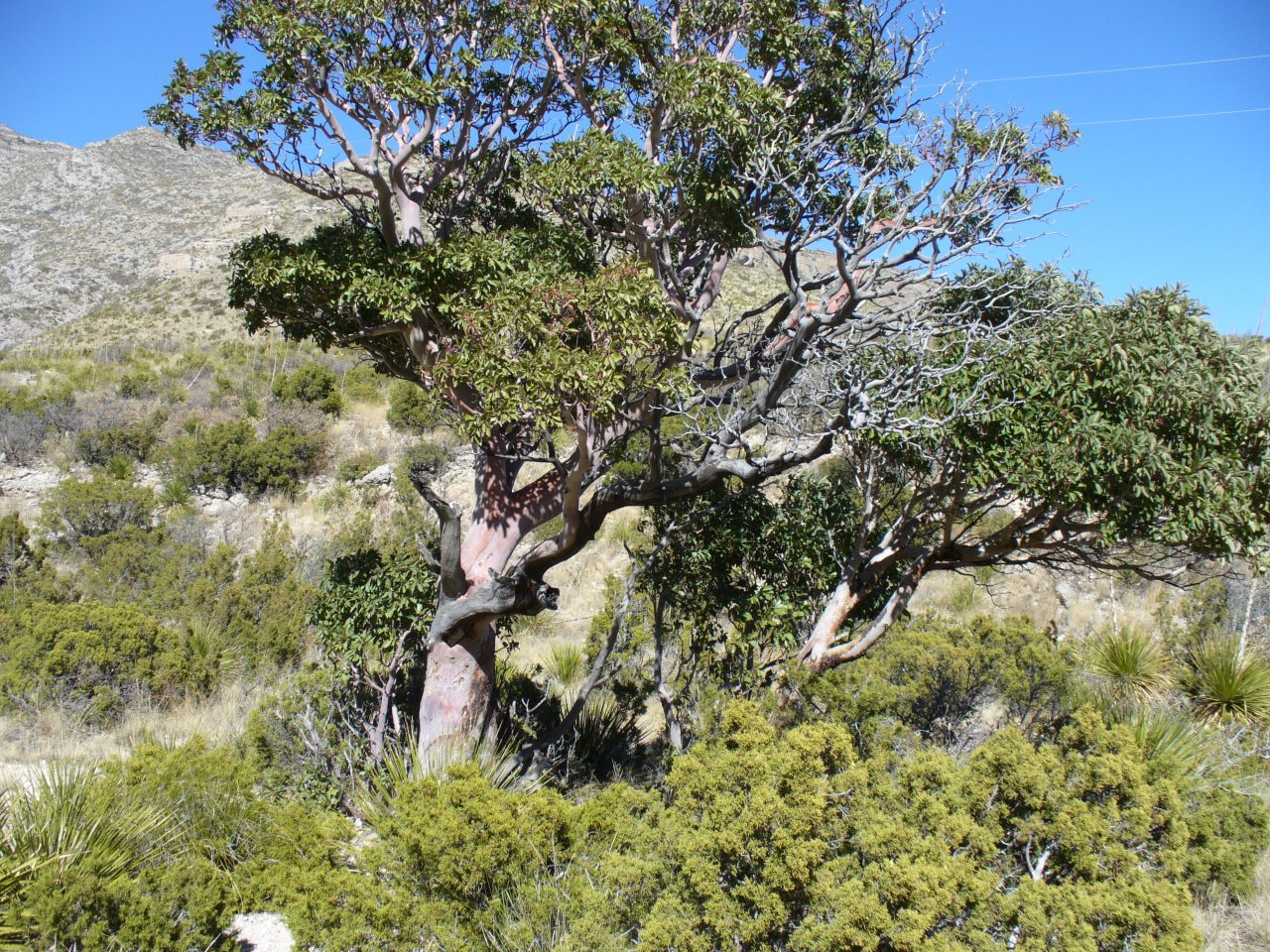 Eroded limestone ledges and western mahogany are common on this
part of the trail.
Eroded limestone ledges and western mahogany are common on this
part of the trail.
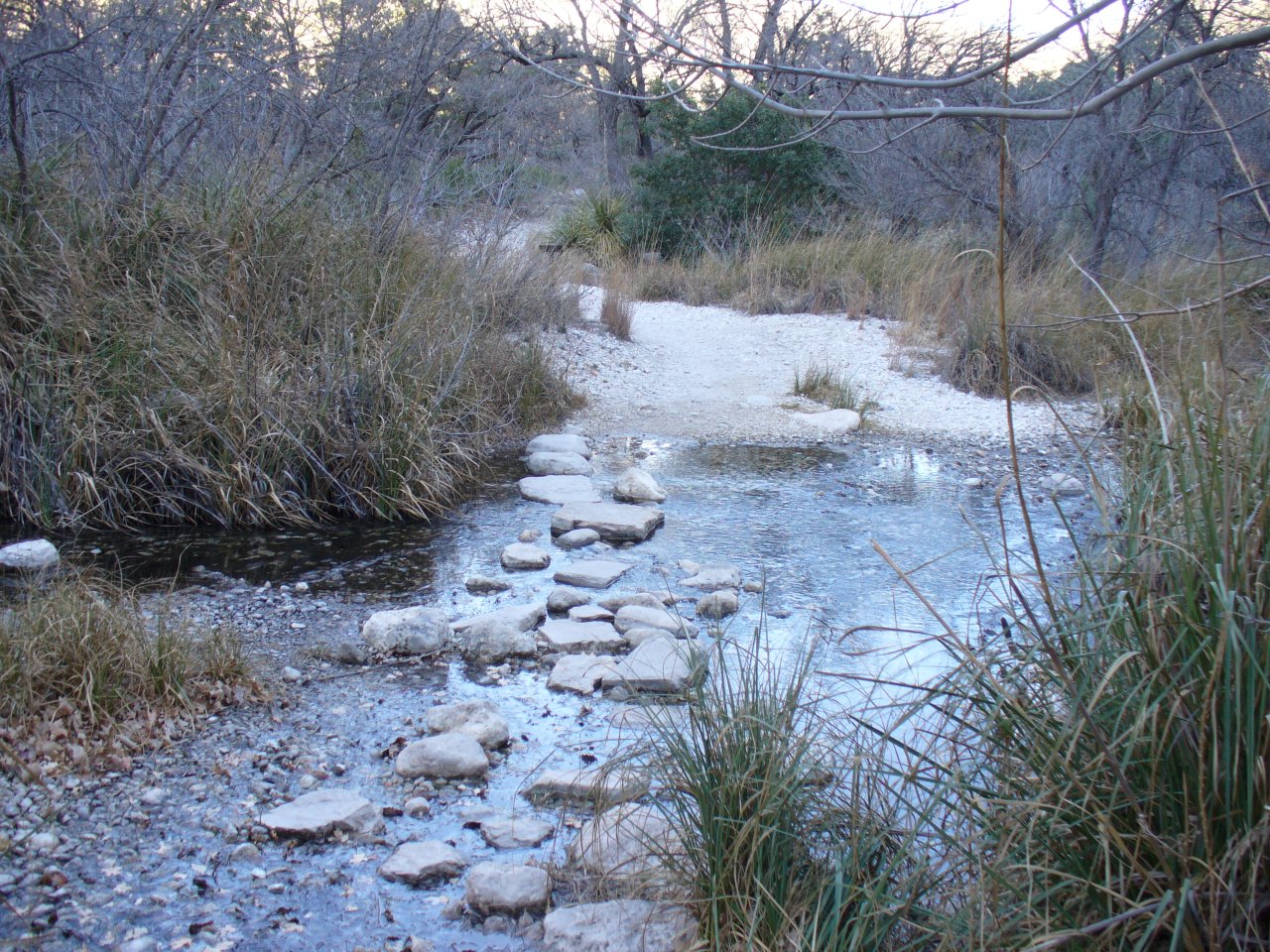
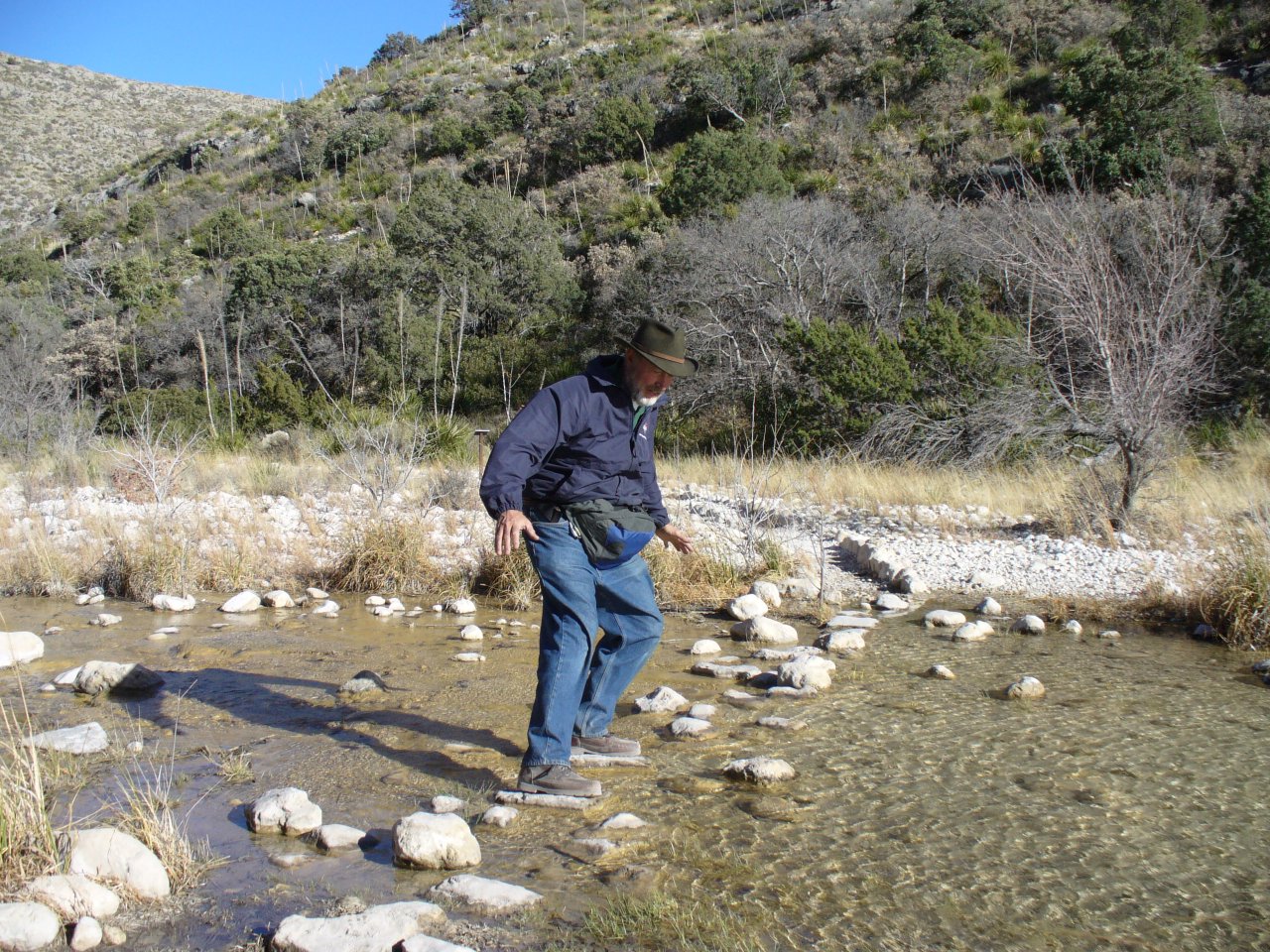 The trail fords a stream in several places. The park is concerned
with the fragile environment of the stream so hikers are urged to
walk on the stones, not in the stream.
The trail fords a stream in several places. The park is concerned
with the fragile environment of the stream so hikers are urged to
walk on the stones, not in the stream.
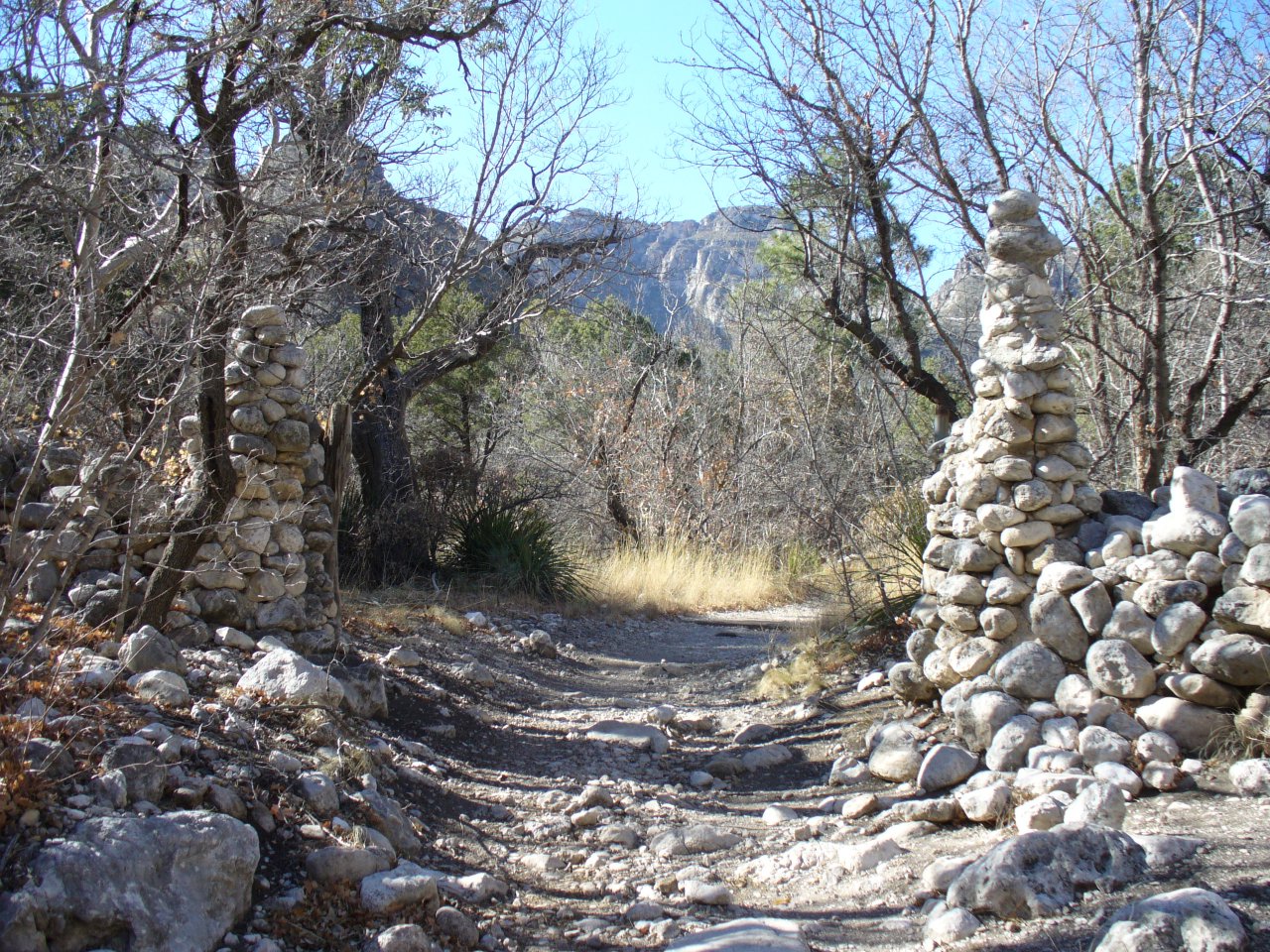 My destination on this hike is Pratt's Lodge, built in the 1930s.
The trail does continue on further up into the canyon, but I was
time limited and had already hiked about ten miles this day!
My destination on this hike is Pratt's Lodge, built in the 1930s.
The trail does continue on further up into the canyon, but I was
time limited and had already hiked about ten miles this day!
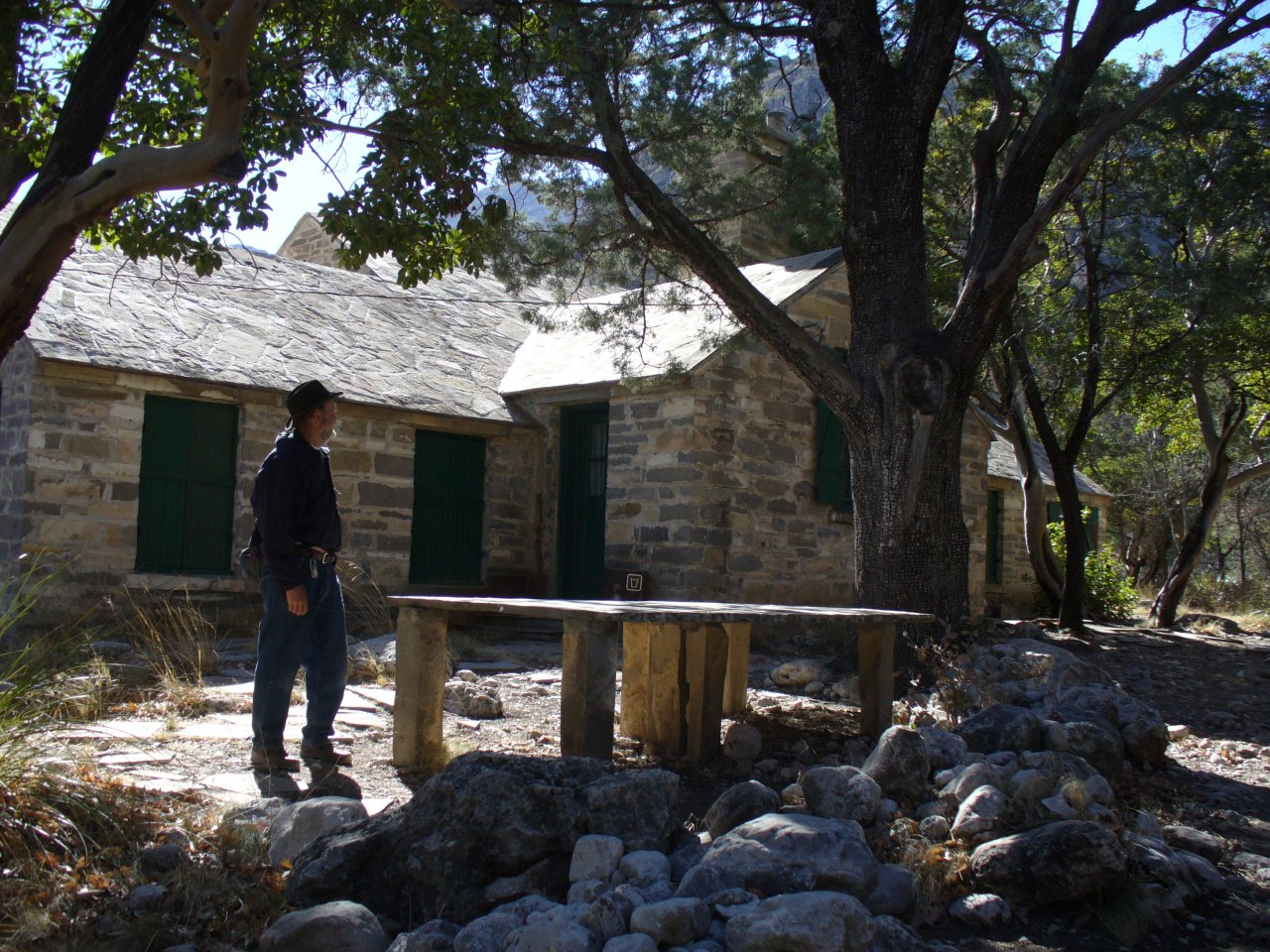
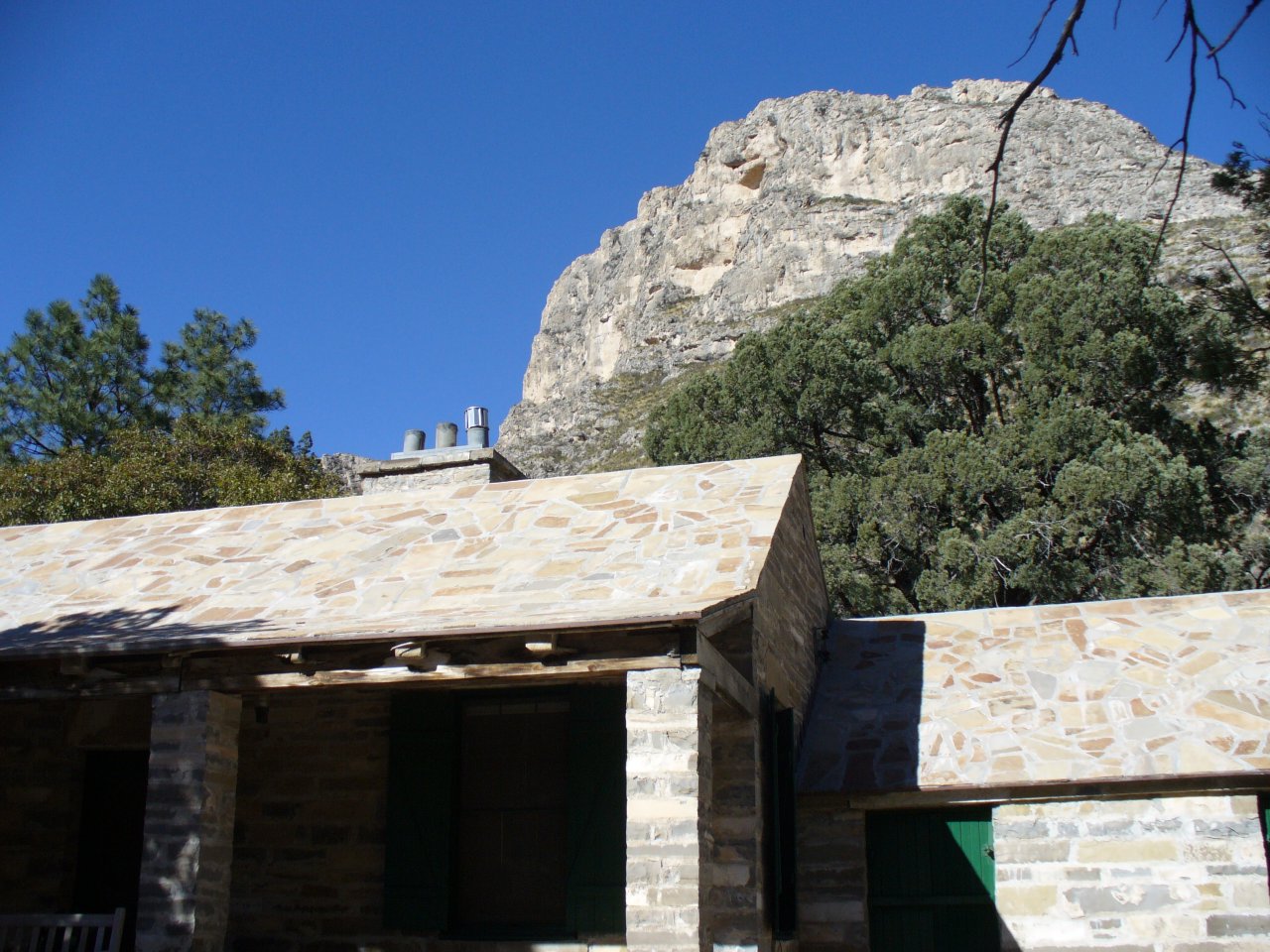 Views of Pratt Lodge. Notice the stone roof! This was a very well
built and designed structure.
Views of Pratt Lodge. Notice the stone roof! This was a very well
built and designed structure.
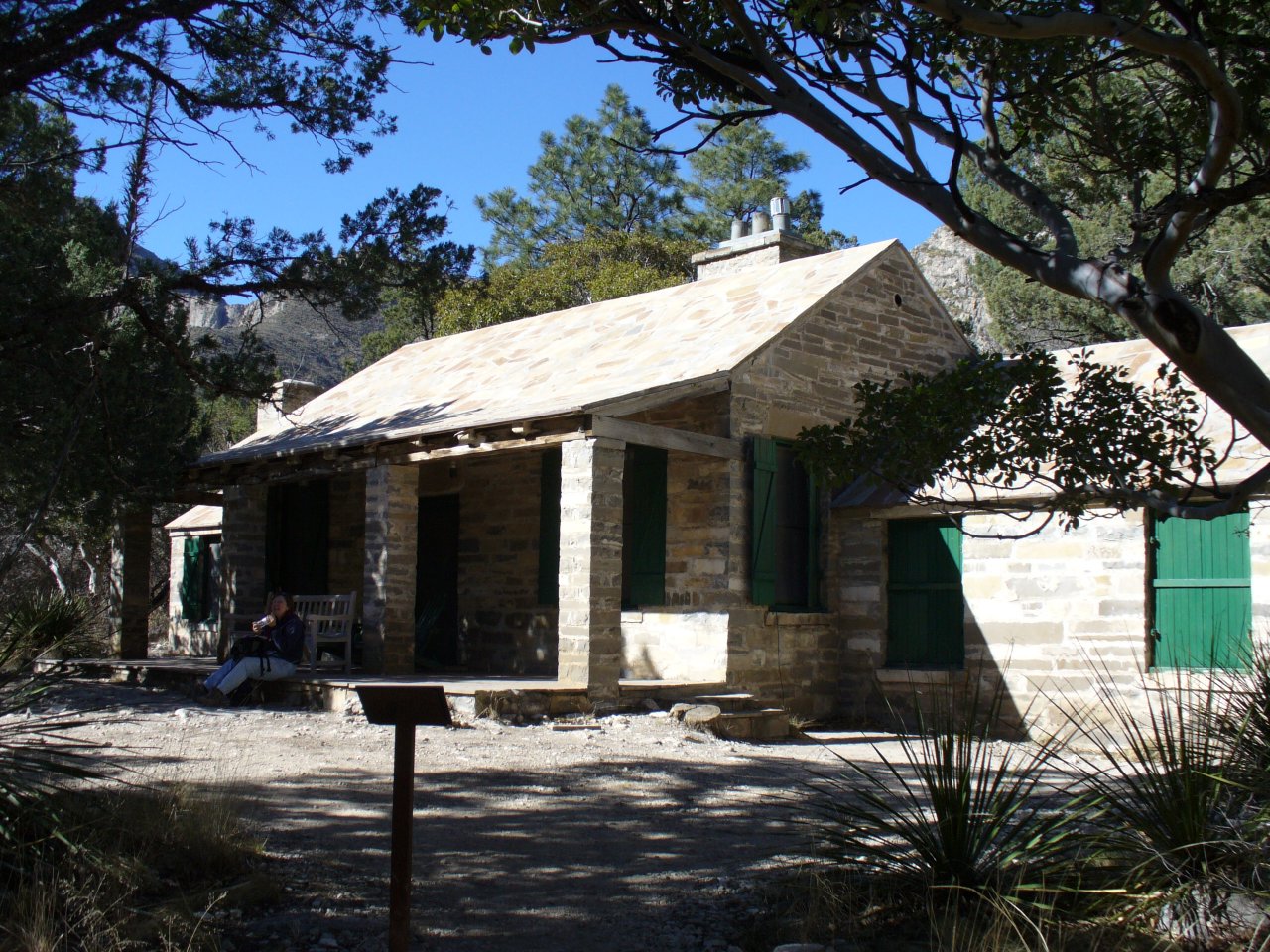
 More views of the lodge..
More views of the lodge..
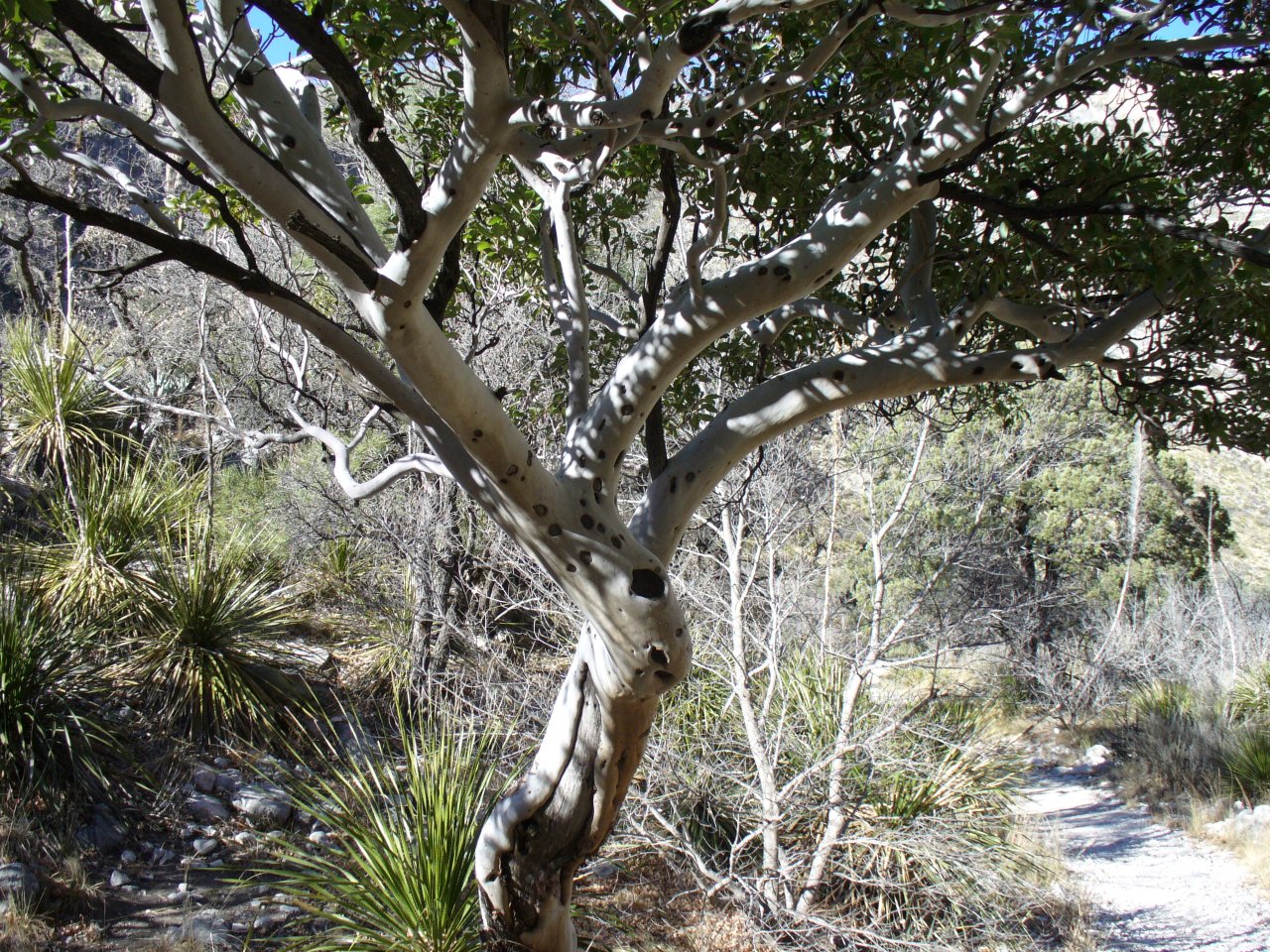
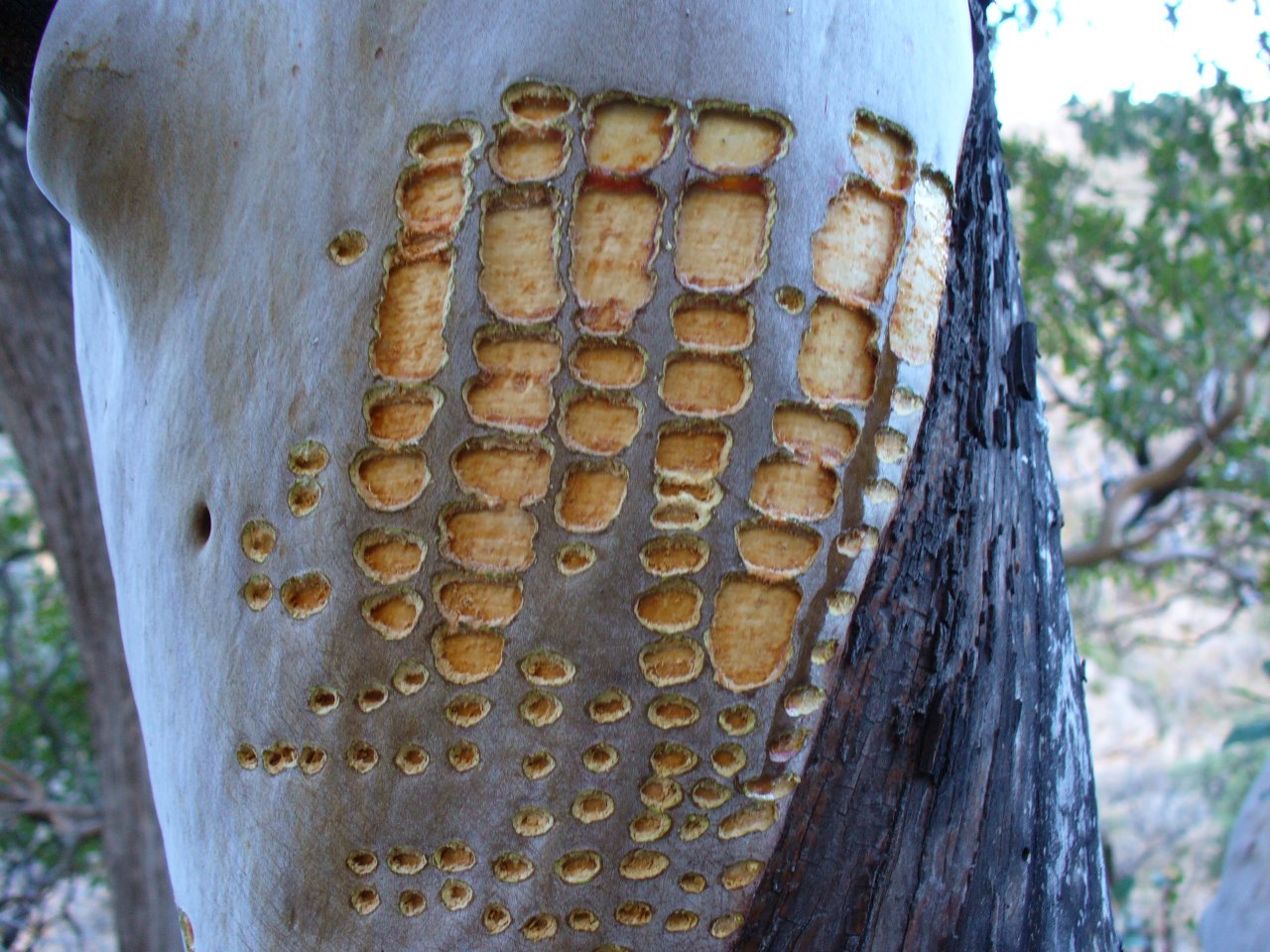 Western mahogany is an interesting tree. On the right is a pattern
I found in one tree made most likely by a woodpecker.
[note: 6-18-2009 I just read an article in today's Cleveland Plain
Dealer, pg E5, that shows a red-breasted sapsucker making
similar marks in a tree. These were probably made by the red-naped
sapsucker]
Western mahogany is an interesting tree. On the right is a pattern
I found in one tree made most likely by a woodpecker.
[note: 6-18-2009 I just read an article in today's Cleveland Plain
Dealer, pg E5, that shows a red-breasted sapsucker making
similar marks in a tree. These were probably made by the red-naped
sapsucker]
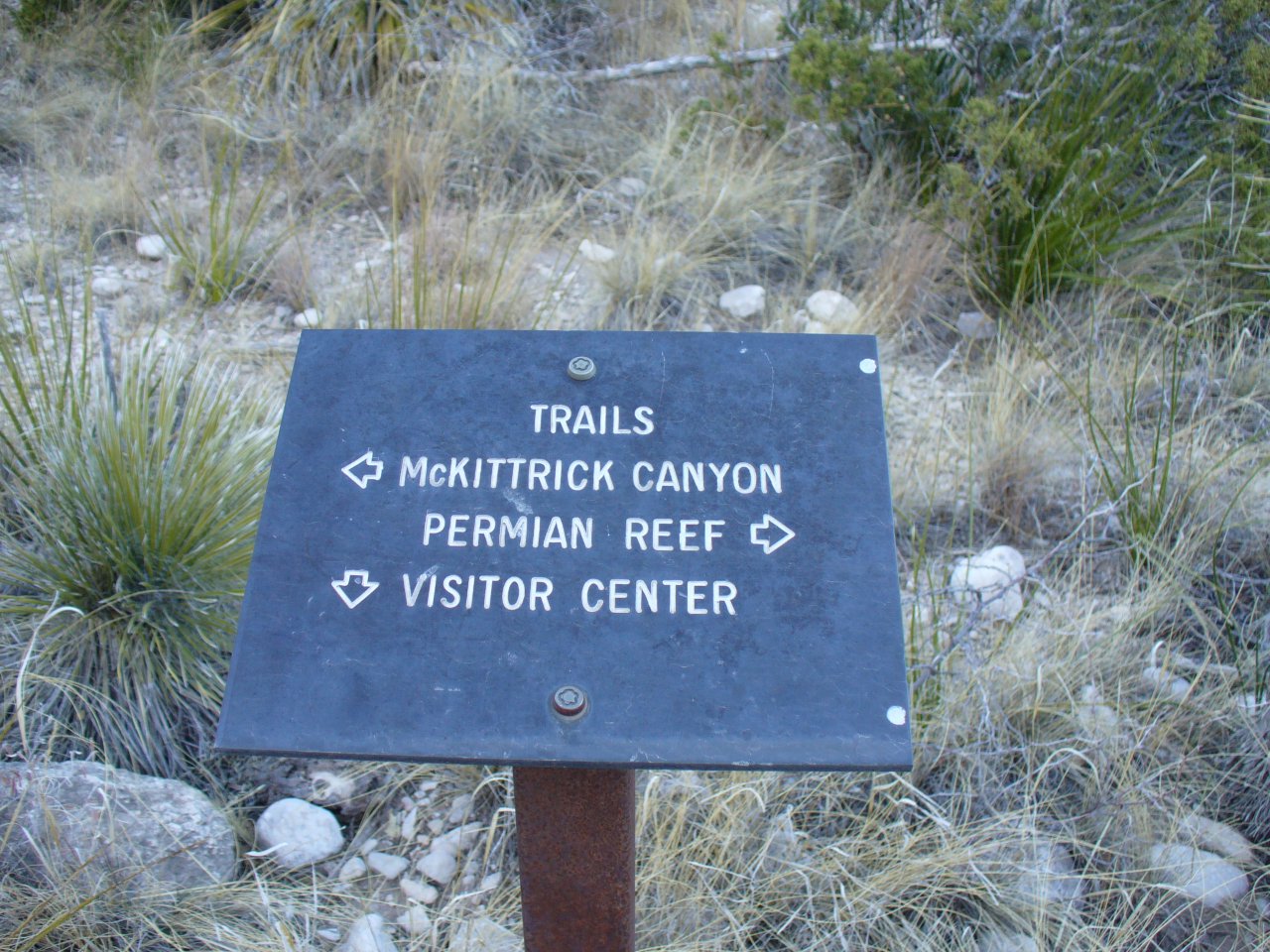
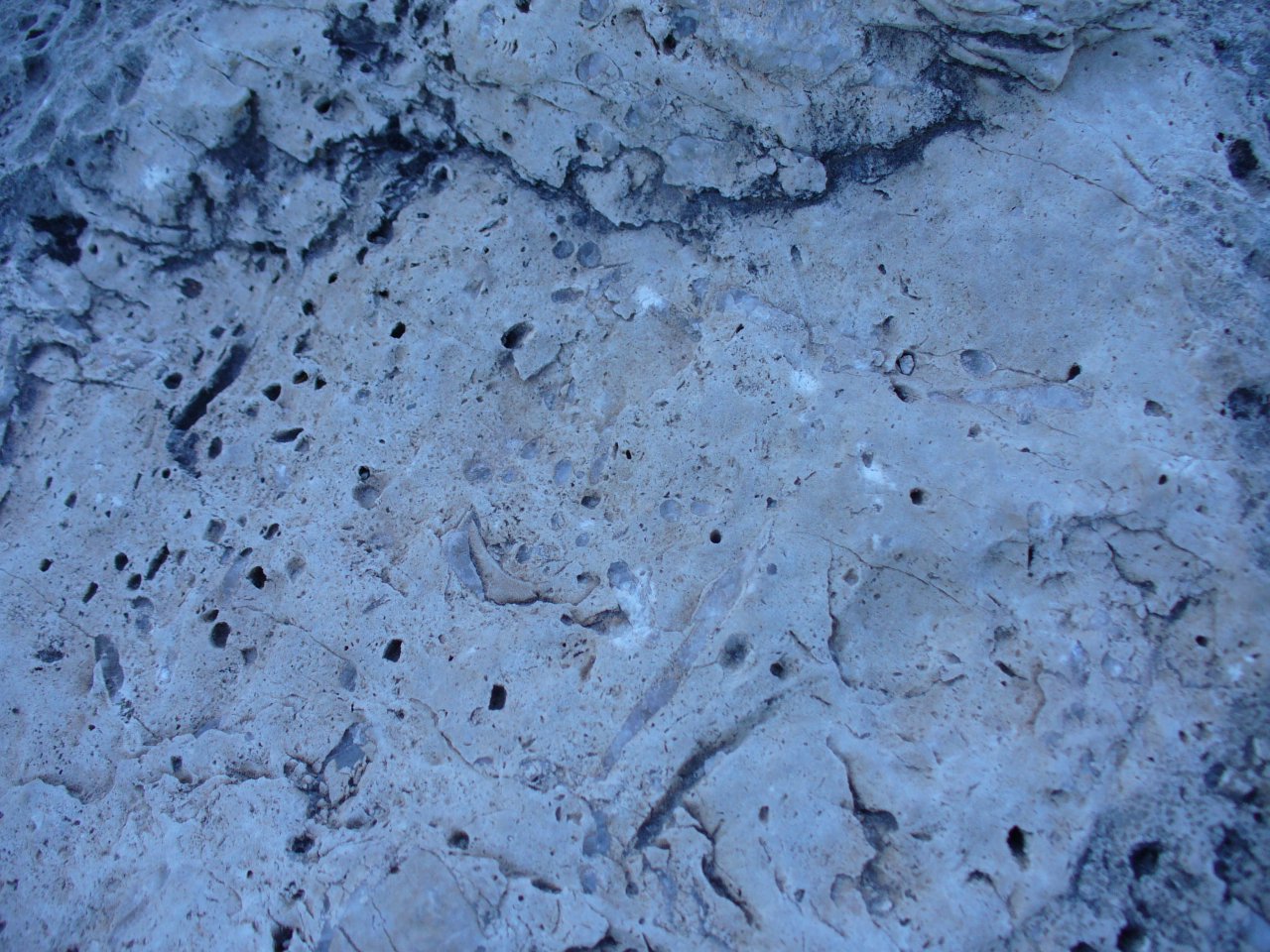 It would have been nice to take the Permian Reef trail, but fossil
evidence was quite abundant on this trail!
For more info from the NPS web site, click here
Return to previous page
It would have been nice to take the Permian Reef trail, but fossil
evidence was quite abundant on this trail!
For more info from the NPS web site, click here
Return to previous page